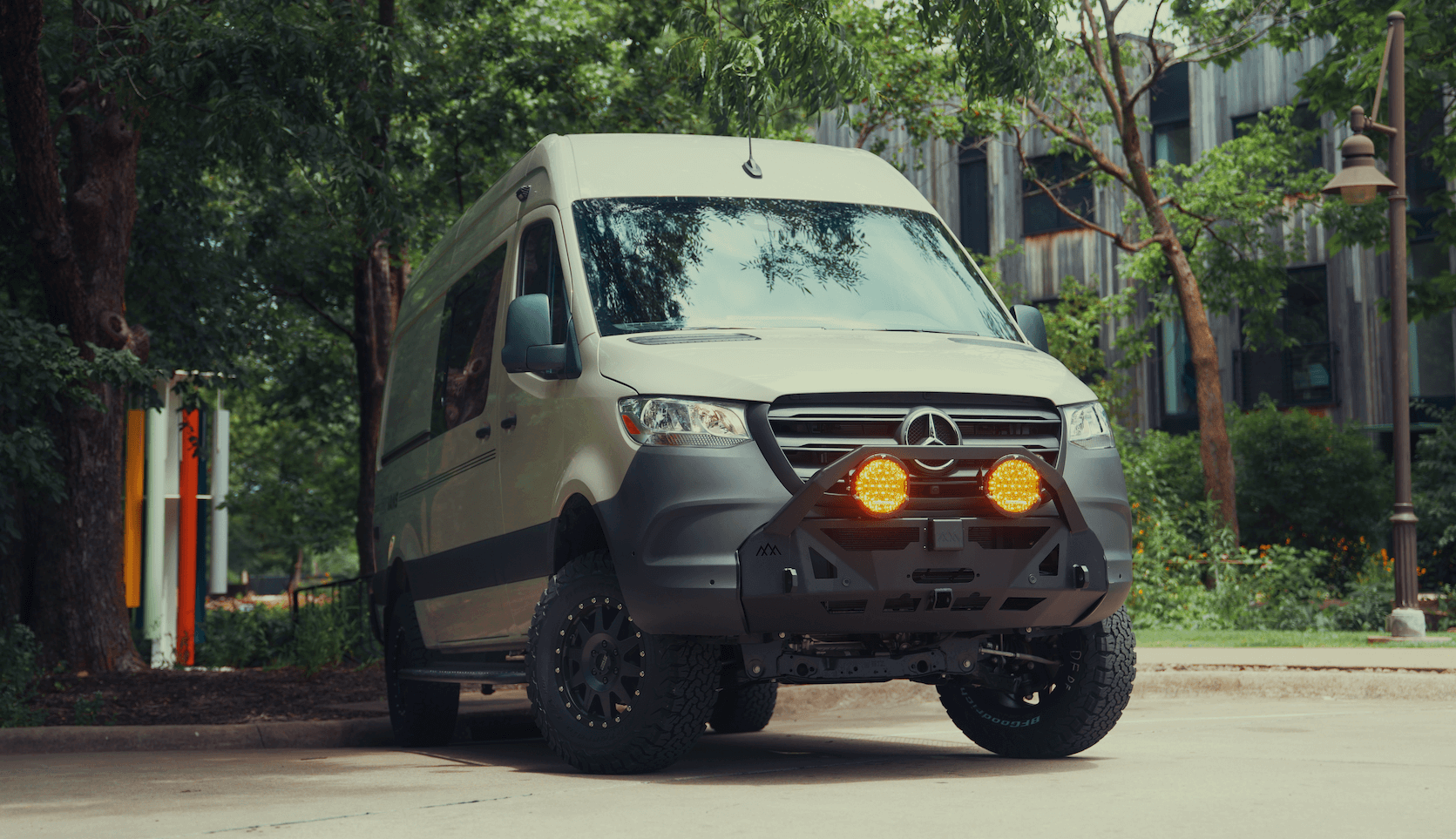Recreational Vans

A 48v van electrical system trades brute current for higher voltage, which lowers amp draw for the same watts. Less current means smaller conductors, lower voltage drop, and cooler hardware under sustained loads. When you want air conditioning, an induction cooktop, or fast charging laptops and e bikes, that efficiency dividend shows up as quieter fans, less heat, and steadier voltage.
In a 12v build, a 3000 watt inverter can see peaks beyond 250 amps on the DC side. At 48v, that same power is around 60 amps. This current reduction simplifies cable routing, busbar sizing, and fuse selection. It also broadens your choice of inverter chargers and MPPT controllers designed around energy dense, high demand systems.
The key is smart integration. A 48v battery bank can feed a dedicated 12v house bus through one or more DC to DC converters, so lighting, fridges, fans, and electronics still live on familiar 12v circuits. High draw gear runs through a 48v inverter or native 48v devices when available. Done right, the system feels seamless.
Pros to consider:
Trade offs to respect:
A dependable 48v van electrical system starts with lithium cells and a BMS that can handle the surge and the cycle life you expect. Lithium iron phosphate is favored for stability, long cycle life, and predictable voltage curves. At 48v nominal, common bank sizes are 5 to 15 kilowatt hours for travel with heavy appliance use.
Think in watt hours, not just amp hours. A 48v 200 amp hour pack is roughly 10 kilowatt hours usable, depending on reserve. Look for a BMS with appropriate continuous and surge ratings, temperature protections, low temperature charge logic, and secure communication for monitoring. Proper busbars with insulating covers, torque verified lugs, and class T or equivalent fusing protect the heart of the system.
Shore power flows through a 48v inverter charger sized to your battery and expected charge window. Solar uses an MPPT matched to array voltage and the 48v bank. For alternator charging, you can add a dedicated high output secondary alternator at 48v or run a chassis friendly 12 to 48 DC to DC charger. Each path needs upstream protection, correct wire sizing, and clear isolation so chassis systems remain happy.
Most van loads still live on 12v. Use one primary DC to DC converter to feed a 12v fuse block, with a second unit in parallel as redundancy. Size for both continuous draw and transient spikes from compressor fridges or fan starts. Keep converter outputs short to the 12v distribution panel, and monitor for temperature and voltage sag under peak use.
System sizing begins with an honest load profile. List devices, duty cycles, and surge behavior. Induction and air conditioning reshape the math, so model worst case days and recovery time under shore, solar, and alternator inputs. A balanced design supports your lifestyle rather than forcing it to fit the system.
Convert daily use to watt hours, then plan battery capacity for at least one full day with your preferred reserve. Choose an inverter charger with continuous output above your simultaneous peak and surge headroom for compressors and cooking. Consider power factor and start profiles of specific devices like mini split or rooftop air units.
Fuse at the source, not the load. Use class T fusing for main battery protection and ANL or MIDI downstream where appropriate. Select tinned copper cable, size for both ampacity and voltage drop, and secure runs to avoid chafe. Proper negative bonding, insulated busbars, and covers reduce arc risk. Follow relevant codes and best practices for mobile power systems and document torque specs for all terminations.
High density power needs airflow. Keep batteries within their thermal comfort zone and separate from inverter heat. Mount heavy gear on reinforced structures, allow front clearance for service, and route cables with gentle bends. Label everything. A clean layout speeds troubleshooting and makes future upgrades painless.
When you want the quiet confidence of a well designed 48v van electrical system, bring your goals to a team that lives this lifestyle. We listen first, map your power profile, and design a system that runs what you actually use, not a brochure list. From battery architecture to alternator charging strategy and 12v distribution, we engineer for reliability and clean service access.
Our shop in Fayetteville Arkansas builds complete adventure vans and partial upfits that integrate power with interiors, climate, storage, and ride quality. Spend handoff day at Adventure Point, learn your system, and roll out ready for the trail. Explore our Recreational vans to see how electrical, cabinetry, and comfort come together.
If you are starting from a bare shell, our Custom build van process covers planning, power, and the full cabin. Looking for a finance friendly platform that can accept a 48v upgrade path, insulation, and gear storage, see our Mainstream vans options.
What we deliver:
Tell us how you travel, what you cook, and where you camp. We will size your battery, protect every run, and commission the system so you can focus on the road, not the readout.
Ready for a quiet, efficient power system that runs real amenities without drama? Tell us how you travel. OZK Customs will design, build, and validate a 48v van electrical system that fits your rig and your routes. Book your consult now and get a clear plan, a clean install, and a handoff you can trust.
ADDRESS:
6159 E Huntsville Rd, Fayetteville, AR 72701
PHONE:
(479) 326-9200
EMAIL:
info@ozkvans.com